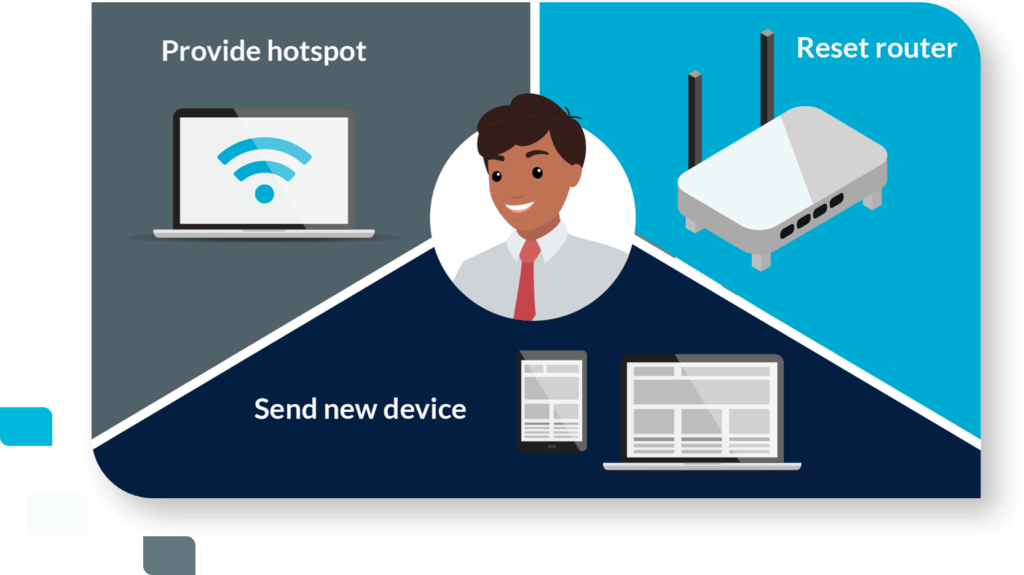Analyzing data enables us to quickly understand, pinpoint, and solve challenges. How can data be applied to solving at-home connectivity issues and thus the homework gap in K-12 education? Let’s explore how districts can leverage the power of data and new technology to support the unique needs of every student.
The Need for Comprehensive Data to Close the Homework Gap
To tackle the digital divide in education, schools must have reliable, current and complete data about students’ internet connectivity out-of-school. Relying on manual outreach methods such as parent surveys or self-reporting from young children leads to incomplete or inaccurate information, but these are the only methods available to most districts.
Unlocking access to real-time data, such as that offered by Lightspeed’s Digital Equity Module, offers school leaders a district-level snapshot and student-level insights into internet connectivity. This enables proactive and quicker troubleshooting (a process which is typically complex and time-consuming due to gaps in data and lack of visibility).
Real-Time Data for Visibility and Personalized Support
All students’ circumstances are unique, but each deserves to have adequate access to digital learning tools whether in or outside of school. Data-driven insights allow districts to proactively customize interventions based on individual students’ needs.
Distinguishing between a network connectivity issue and a device problem, for example, enables more efficient troubleshooting by allowing IT administrators to discern whether the problem lies in insufficient bandwidth, device health issues, or other factors. Evaluating the condition of devices–including battery health, device age, and OS version–provides precise detection of any hardware or software issues that may hinder internet access.

Effective troubleshooting requires differentiating between poor connectivity due to insufficient bandwidth and a lack of WiFi. This is particularly important for students who have WiFi access but are sharing their network with too many users at home or a community center. In such cases, school districts can easily identify where personal hotspots are needed to address connectivity issues and ensure that every student has reliable internet access.
Finally, monitoring student activity is crucial in understanding the factors contributing to access issues. By tracking daily activity, identifying the most frequently used apps, and assessing the programs that consume significant bandwidth, educators can make informed decisions and provide targeted solutions. For example, finding appropriate alternatives to high-bandwidth apps can help improve internet connectivity for students and ensure that they have access to the resources they need to succeed.

CONCLUSION
Real-time, student-level data helps districts identify and troubleshoot connectivity roadblocks, and proactively meet the unique needs of individual students. Learn more about how Lightspeed’s Digital Equity Module can unlock visibility to help your district close the digital divide and create a more equitable learning environment for all.
Want to learn more about Lightspeed’s Digital Equity Module? Contact the Lightspeed team today.

